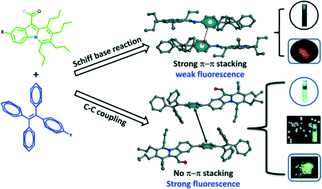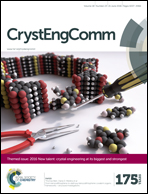C–C coupling over Schiff base condensation: a rational design strategy for a strongly fluorescent molecular material†
Abstract
Schiff base condensation and C–C coupling between a biologically important heterocycle pyrido[1,2-a]indole (PI) and aggregation induced emission active tetraphenylethylene (TE) led to the formation of weakly fluorescent PITE1 and strongly fluorescent PITE2, respectively. The photophysical phenomenon was rationalized by crystal structure analysis; PITE2 was found to exhibit strong fluorescence in solution, nanoparticles and solid state.

- This article is part of the themed collection: 2016 New talent

 Please wait while we load your content...
Please wait while we load your content...